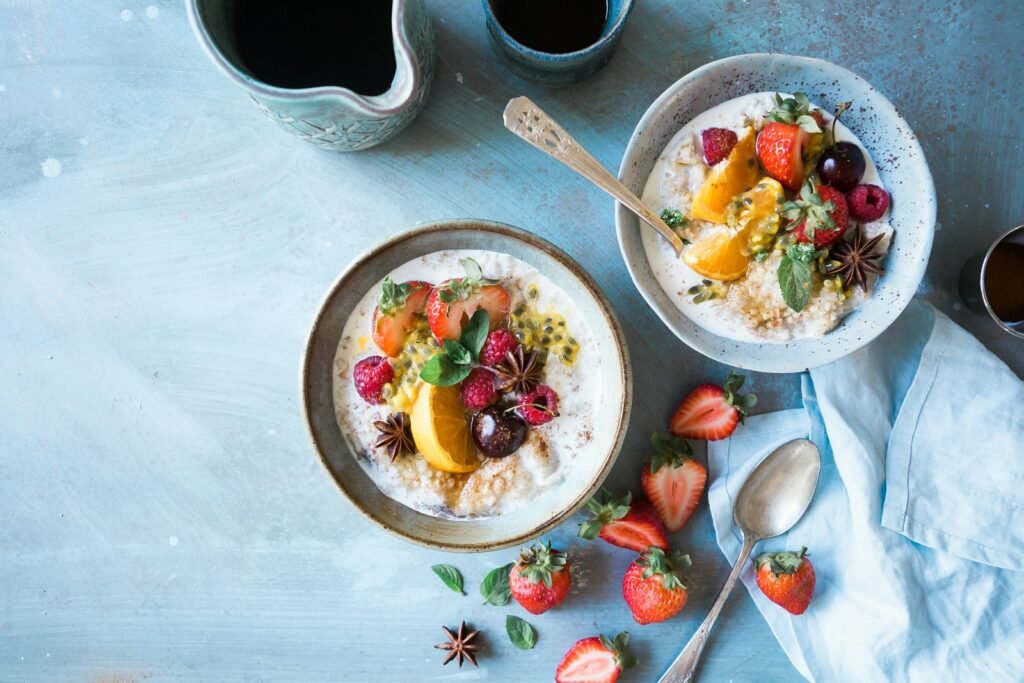Impact of Diet on Blood Pressure
In our quest for better health, the profound impact of diet on blood pressure can often be underestimated. Making thoughtful dietary choices can lead to significant improvements in managing blood pressure levels. Among the numerous foods that can help, berries and beets stand out for their remarkable contributions to heart health.
Role of Berries in Blood Pressure Management
Berries, particularly strawberries and blueberries, are not only delicious but also powerhouse foods when it comes to blood pressure management. They are rich in antioxidant compounds known as anthocyanins, which have been linked to reduced blood pressure levels. Here’s how you can incorporate them into your diet:
- Snack on Them: Enjoy a bowl of mixed berries as a sweet treat.
- Breakfast Boost: Add them to oatmeal or yogurt for a nutritious morning boost.
- Smoothie Magic: Blend them into smoothies for a tasty hydration option.
Research indicates that regular consumption of berries can lead to substantial improvements in hypertension, making them a delightful addition to your meals.
Benefits of Beets for Lowering Blood Pressure
Beets are another superfood that deserves your attention. Packed with dietary nitrates, they are known to help the body convert these compounds into nitrous oxide, which helps relax and dilate blood vessels—leading to lower blood pressure. Here are some delicious ways to enjoy beets:
- Roasted Beets: Slice and roast them as a nutritious side dish.
- Salads: Toss raw beets into salads for a crunchy texture.
- Juicing: Drink beet juice (ensure it’s unsweetened) to enjoy the benefits straight away.
By incorporating these vibrant foods into your daily diet, you are not just eating healthily; you are also taking an active step towards managing and potentially lowering your blood pressure naturally. The journey towards better heart health can be both enjoyable and effective when you make these flavorful choices!
The Ultimate Food List for Managing Blood Pressure
You’ve probably heard the saying, “You are what you eat,” and when it comes to managing blood pressure, it couldn’t be more accurate! Choosing the right foods can significantly influence your overall health, specifically your blood pressure levels. Here are some food groups to incorporate into your diet to help lower blood pressure naturally:
Incorporating Leafy Greens
Leafy greens are among the most beneficial foods for blood pressure management. They are rich in potassium, which helps balance sodium levels in the body. Adding greens like spinach, kale, and Swiss chard to your meals can be simple:
- Salads: Toss fresh spinach or kale with your favorite dressing.
- Smoothies: Blend greens with fruits for a delicious beverage.
- Cooking: Sauté with garlic and olive oil for a tasty side dish.
Importance of Whole Grains
Whole grains are not only nutritious; they also play a vital role in heart health. Foods like oats, quinoa, and brown rice contain fiber, which can aid in lowering blood pressure. Try these tips:
- Breakfast: Start your day with a hearty bowl of oatmeal topped with berries.
- Substitute: Use whole-grain bread instead of white bread in sandwiches.
- Baking: Incorporate whole-grain flours into your baking recipes.
Utilizing Nuts and Seeds
Nuts and seeds are packed with healthy fats and minerals that benefit heart health. Regular consumption of nuts like almonds, walnuts, and seeds such as flaxseed can support blood vessel function. Here’s how to enjoy them:
- Snacks: Munch on a handful of unsalted nuts.
- Add to Meals: Sprinkle nuts or seeds on salads or yogurt for extra crunch.
- Nut Butters: Spread almond or peanut butter on whole-grain toast or fruit.
Including Lean Proteins
Lean proteins, such as poultry, fish, and legumes, are essential for a well-rounded diet. They provide your body with adequate protein without excess saturated fat. Consider these options:
- Grilling: Opt for grilled chicken or fish for dinner instead of fried options.
- Legumes: Incorporate beans and lentils in soups and salads.
- Meal Prep: Batch cook lean meats for quick and healthy meals throughout the week.
Benefits of Low-Fat Dairy Products
Low-fat dairy products like yogurt and milk are not only calcium-rich but may also help regulate blood pressure. They’re easy to include in your diet:
- Breakfast: Use low-fat yogurt with fruits and granola.
- Cooking: Use low-fat milk in cooking or baking.
- Smoothies: Blend yogurt or milk with fruits for a refreshing smoothie.
By incorporating these food groups into your daily meals, you can strategically manage and lower blood pressure naturally while enjoying delicious and nutritious dishes!
Lifestyle Changes for Better Blood Pressure
While maintaining a healthy diet is crucial for managing blood pressure, lifestyle changes play an equally important role. By adopting simple, actionable habits, you can significantly improve your overall health and well-being. Let’s dive into three key lifestyle changes that can help you achieve better blood pressure control.

Importance of Regular Physical Activity
Regular physical activity is one of the best ways to lower and maintain healthy blood pressure levels. Engaging in aerobic exercises, even just 30 minutes a day, can make a notable difference. Here’s how to get started:
- Walking: Aim for brisk walks around your neighborhood.
- Group Classes: Join a fitness class or community group for motivation.
- Activities you Enjoy: Dancing, swimming, or cycling can also be great options!
Staying active doesn’t mean you have to be in the gym all day; even simple movements count!
Stress Management Techniques
Managing stress effectively is vital for emotional and physical health. Chronic stress can lead to elevated blood pressure, so it’s essential to find techniques that work for you:
- Deep Breathing Exercises: Take a few minutes each day to focus on your breath.
- Mindfulness Meditation: Set aside time to practice mindfulness, which can help calm your mind.
- Hobbies: Engage in activities you love, whether it’s gardening, reading, or painting.
Adequate Sleep for Blood Pressure Control
Never underestimate the power of quality sleep! Poor sleep patterns can disrupt hormone regulation and lead to increased blood pressure. Here are some tips for better sleep:
- Set a Schedule: Aim to sleep and wake up at the same time every day.
- Create a Relaxing Environment: Make your bedroom a calm, serene space—think cool, dark, and quiet.
- Limit Screen Time: Try to avoid screens at least an hour before bedtime.
By adopting these lifestyle changes, you’re not just helping to manage your blood pressure. You’re also investing in your overall health and well-being, making your journey toward a healthier life even more rewarding!
Monitoring and Tracking Blood Pressure Levels
Taking control of your blood pressure is a vital aspect of maintaining your overall health. One of the most effective ways to do this is by monitoring and tracking your levels regularly. This not only helps you keep an eye on your health but also allows you to make informed decisions when it comes to lifestyle changes and treatment plans.
Understanding Blood Pressure Readings
Blood pressure readings consist of two numbers: the systolic (the top number) and diastolic (the bottom number). Here’s what they mean:
- Systolic Pressure: Measures the pressure in your arteries when your heart beats. A reading of 130 mm Hg or higher may indicate hypertension.
- Diastolic Pressure: Measures the pressure in your arteries when your heart is at rest. A reading of 80 mm Hg or higher can also signal high blood pressure.
For example, a reading of 130/85 mm Hg means the systolic pressure is 130 and diastolic 85. It’s essential to understand these numbers, as they can help guide your dietary and lifestyle choices.
Using Technology for Tracking Blood Pressure
Today, technology makes it easier than ever to track your blood pressure. You don’t have to rely solely on clinic visits; here are a few options to consider:
- Home Monitors: Investing in a reliable blood pressure monitor can help you track your readings regularly. Many monitors come with user-friendly features and memory settings.
- Mobile Apps: Various smartphone apps enable you to log your readings, track trends, and even share this information with your healthcare provider.
- Wearable Devices: Some fitness trackers include blood pressure monitoring features, allowing you to keep an eye on your levels throughout the day.
By utilizing these tools, you can stay proactive in managing your blood pressure and make any necessary adjustments to your lifestyle. Whether it’s through regular exercise or dietary changes, knowledge is power—and knowing your numbers is the first step toward a healthier life!
Consultation with Healthcare Professionals
Managing blood pressure is a multifaceted approach that benefits from both diet and professional guidance. If you want to keep your cardiovascular health in check, consulting with healthcare professionals is indispensable. They can provide personalized advice tailored to your specific health needs and circumstances.
Importance of Medical Advice in Managing Blood Pressure
Medical professionals play a crucial role in the effective management of high blood pressure. Consulting with a doctor can help you:
- Assess Your Risks: Your healthcare provider can evaluate your blood pressure readings, medical history, and lifestyle to determine your unique risk factors.
- Personalized Recommendations: They can offer tailored dietary and lifestyle adjustments, as well as monitor their effectiveness over time.
- Education: Healthcare professionals can educate you about various aspects of hypertension management, empowering you to make informed decisions.
Role of Medication in Blood Pressure Control
While adopting a healthier lifestyle through diet and exercise is essential, sometimes it isn’t enough. This is where medication may come into play. Here’s how medication can help:
- Types of Medications: Depending on your health condition, doctors may prescribe various classes of medications, such as diuretics, ACE inhibitors, or beta-blockers, tailored to your needs.
- Monitoring Effectiveness: Regular check-ups allow doctors to assess how well the medication is working and make adjustments as necessary.
- Preventing Complications: Proper medication management can significantly reduce the risks associated with untreated hypertension, such as heart disease or stroke.
In summary, collaboration with healthcare professionals is critical for effective blood pressure management. By incorporating their insights and potential medication, you can take significant steps toward achieving your health goals and maintaining optimal cardiovascular health. Taking charge of your health doesn’t just mean eating the right foods; it also involves seeking expert guidance whenever needed!




